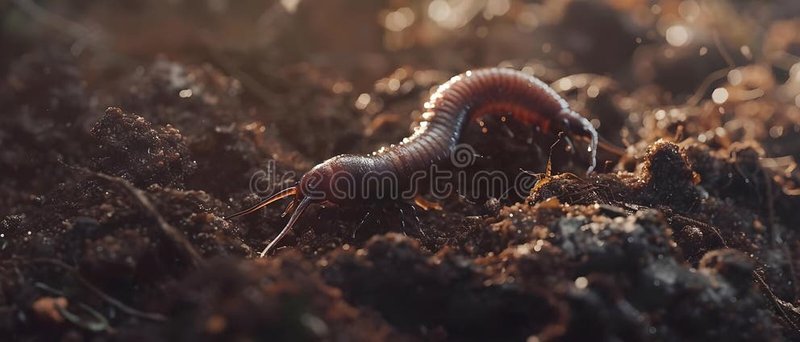
Imagine bristle worms as the recyclers of the sea. They break down organic material, turning what would be waste into valuable nutrients that other marine life depends on. By doing this, they help keep the ocean’s delicate balance humming along. So, what exactly are bristle worms, and how do they fit into the bigger picture of nutrient cycling? Let’s dive in and explore!
What Are Bristle Worms?
Bristle worms belong to a group of segmented worms known scientifically as *Polychaeta.* You might not realize it, but these worms can be found all over the world, from tidal pools to the deep sea. They come in various shapes and sizes, with some species even stretching up to 10 feet long! A defining feature of bristle worms is the tiny bristles or “setae” that cover their bodies, which help them move and sense their environment.
These worms are often divided into two main categories: errant and sedentary. Errant bristle worms are the explorers of the sea floor. They actively seek food, hunting down microorganisms, dead organisms, and debris. In contrast, sedentary bristle worms tend to stay in one spot, living in tubes they construct from sand and mucus. They filter feed, grabbing tiny particles from the water around them. Both types play vital roles in nutrient cycling, despite their different lifestyles.
The Process of Nutrient Cycling
Now that we know what bristle worms are, let’s talk about nutrient cycling itself. Think of nutrient cycling as the ocean’s way of recycling. It involves the movement and transformation of nutrients, like nitrogen and phosphorus, through various forms—living organisms, dead matter, and the environment.
In simpler terms, it’s similar to a compost heap. When you toss kitchen scraps into a compost bin, microorganisms break them down, turning waste into nutrient-rich soil for your plants. Similarly, bristle worms break down organic materials in the water and sediment, making nutrients available for other marine organisms.
Nutrient cycling is essential for maintaining healthy ecosystems. Without it, we would see a build-up of waste and dwindling resources for marine life. Bristle worms play a starring role in ensuring this process runs smoothly.
Bristle Worms and Organic Matter Breakdown
Here’s the thing: bristle worms are masters at breaking down organic matter. They consume decaying plant and animal material, digesting it and excreting nutrient-rich waste. This waste is a goldmine for other organisms, like bacteria and phytoplankton, that need these nutrients to thrive.
When bristle worms munch away at this waste, they don’t just help themselves. They’re essentially kickstarting a chain reaction in the food web. Their waste becomes food for smaller creatures, which, in turn, are eaten by larger animals.
Think of it as a dinner party where bristle worms are the hosts. They get the meal started by breaking down the food, and everyone else benefits from the feast. Without bristle worms, the dinner table would be empty!
The Role of Bristle Worms in Sediment Recycling
Bristle worms also play a significant role in sediment recycling. They help aerate and mix the ocean floor’s sediments, ensuring that nutrients don’t get trapped. This mixing process is crucial because it allows essential nutrients to circulate through the water column.
Imagine stirring sugar into your coffee. If you don’t stir, the sugar settles at the bottom, and you won’t get that sweet flavor. Similarly, if bristle worms didn’t move and mix the sediment, valuable nutrients would remain buried and unavailable to other marine life.
Moreover, as they burrow into the sand and mud, they create tiny tunnels, which helps improve water flow and oxygen availability. This process benefits a whole host of other organisms, from bacteria to larger fish, allowing them to thrive in their environment.
Bristle Worms and Ecosystem Health
The health of our oceans largely depends on the health of its ecosystems. Bristle worms are like the canaries in the coal mine; their presence indicates a well-functioning environment. When bristle worm populations are stable, it generally reflects a balanced ecosystem.
However, if their numbers dwindle, it can signal trouble. For example, pollution, habitat destruction, and climate change can impact these worms and, subsequently, the nutrient cycling process. A decline in bristle worm populations could lead to nutrient imbalances, affecting everything from tiny plankton to large predatory fish.
In essence, protecting bristle worms means protecting our oceans. By ensuring these little warriors thrive, we’re also promoting healthy marine ecosystems.
So, what’s the takeaway? Bristle worms are essential players in nutrient cycling, contributing to the health and stability of our ocean ecosystems. They break down organic matter, recycle nutrients, and support a balanced underwater community. The next time you’re near the ocean, take a moment to appreciate these often-overlooked creatures.
Each bite they take and every burrow they create helps sustain life beneath the waves. By understanding and protecting bristle worms, we’re also safeguarding the vibrant, interconnected web of life that makes our oceans so extraordinary. So, let’s champion these little heroes and work towards healthier oceans for future generations!
